
Theretra oldenlandiae, the impatiens hawkmoth, taro hornworm or white-banded hunter hawkmoth, is a member of the family Sphingidae.

Psilogramma increta, the plain grey hawkmoth, is a moth of the family Sphingidae.

Gnathothlibus erotus, the white-brow hawkmoth, is a moth of the family Sphingidae. The species was first described by Pieter Cramer in 1777.

Theretra clotho, the common hunter hawkmoth, is a moth of the family Sphingidae. It is found from Sri Lanka, India, Nepal and Myanmar, east through China to Taiwan, South Korea and Japan, and then south-east through South East Asia as far as the Lesser Sunda Islands and Timor in Indonesia. They can disperse long distances and may be found up to northern China. The habitat consists of open forests, forest edges, orchards, plantations, wooded scrubs, suburban gardens and city parks.

Theretra latreillii, the pale brown hawk moth, is a moth of the family Sphingidae described by William Sharp Macleay in 1826. It is found in most of Asia, including Borneo, China, Hong Kong, the Philippines, Taiwan and also throughout the tropical and temperate regions of Australia.

Hyles hippophaes, the seathorn hawk-moth, is a species of moth in the family Sphingidae. The species was first described by Eugenius Johann Christoph Esper in 1789.
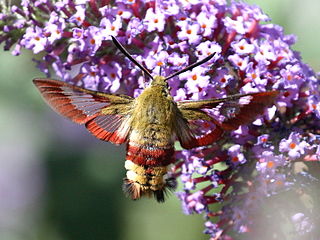
Hemaris fuciformis, known as the broad-bordered bee hawk-moth, is a moth of the family Sphingidae.

Theretra japonica is a moth of the family Sphingidae first described by Jean Baptiste Boisduval in 1869.
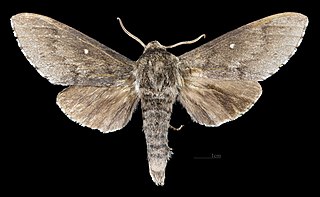
Sphingulus is a genus of moths in the family Sphingidae, containing only one species, Sphingulus mus, the murine hawkmoth.

Deilephila askoldensis is a moth of the family Sphingidae.

Acosmeryx anceus is a moth of the family Sphingidae. It was described by Caspar Stoll in 1781, and it is known from India, New Guinea, and Queensland, Australia.

Acosmeryx castanea is a moth of the family Sphingidae. It was described by Rothschild and Jordan in 1903.
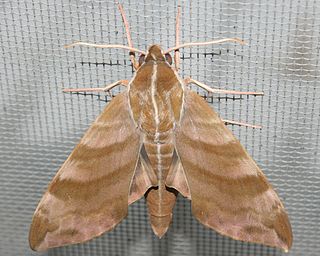
Ampelophaga rubiginosa is a moth of the family Sphingidae. It was described by Otto Vasilievich Bremer and William (Vasilii) Grey in 1853. It is found from north-eastern Afghanistan, east around the southern margin of the Himalaya to Yunnan, then throughout China to the Russian Far East, the Korean Peninsula and Japan. It is also found south through Thailand and Vietnam to Sumatra and Peninsular Malaysia.
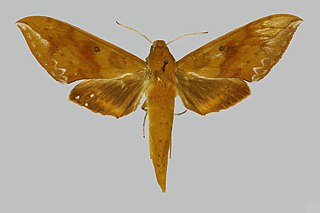
Rhagastis olivacea, the olive mottled hawkmoth, is a moth of the family Sphingidae.

Rhagastis confusa, the indistinct mottled hawkmoth, is a moth of the family Sphingidae.

Rhagastis castor is a moth of the family Sphingidae first described by Francis Walker in 1856.

Rhagastis albomarginatus is a moth of the family Sphingidae.
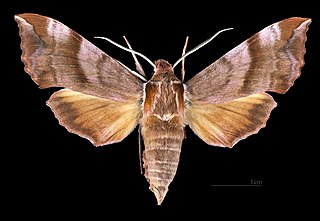
Clarina syriaca is a moth of the family Sphingidae. *

Cechetra minor, the lesser green hawkmoth, is a moth of the family Sphingidae.
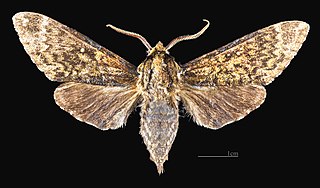
Dolbina exacta, the exact grizzled hawkmoth, is a species of moth of the family Sphingidae.























